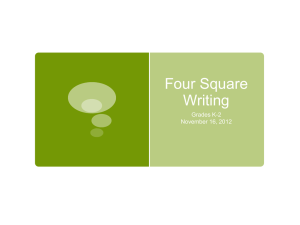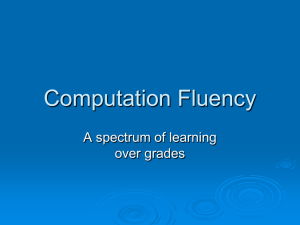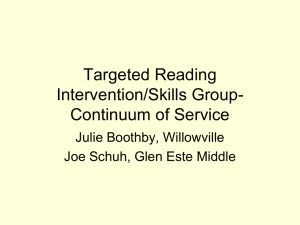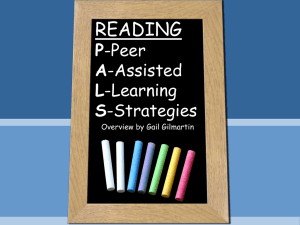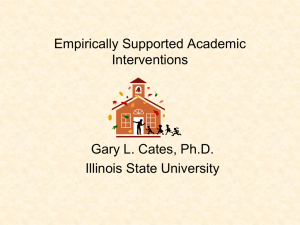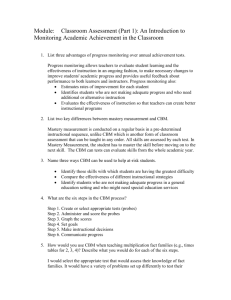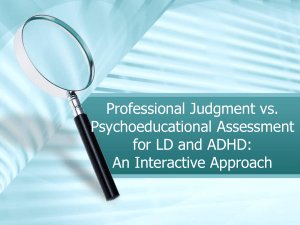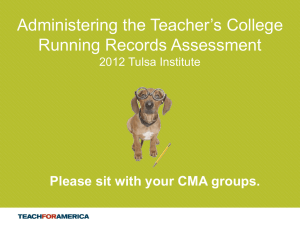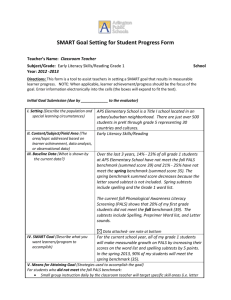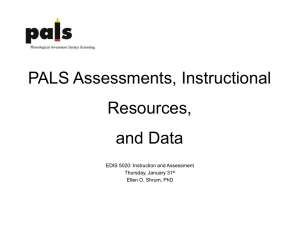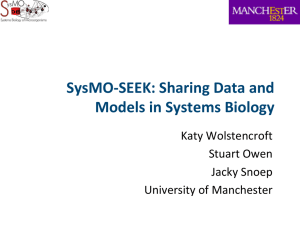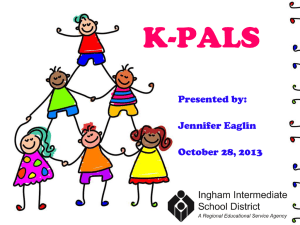Beyond BDA: Using Reading and Writing to Build Knowledge
advertisement
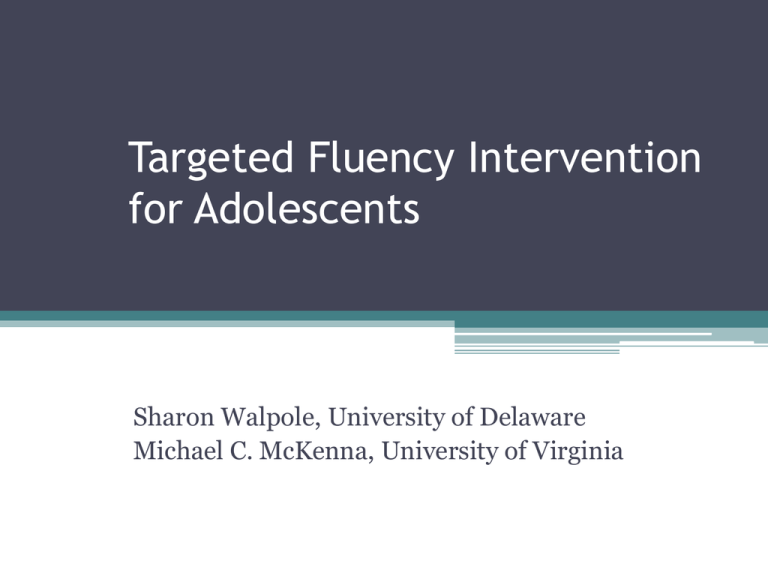
Targeted Fluency Intervention for Adolescents Sharon Walpole, University of Delaware Michael C. McKenna, University of Virginia Goal Present a rationale for considering intervention programs and intervention strategies. Argue that fluency strategies can be integrated into your existing structure for ELL or social studies. Present one fluency and comprehension intervention. Provide you with readings to build your knowledge. Developmental Differentiation Plan? Vocabulary & Comprehension Fluency and Comprehension Only in K-5 Word Recognition and Fluency PA and Word Recognition Only in K-2 You know that all vendors claim their wares are scientifically based It may not be entirely true. A scientifically-based program would have to be tested with random assignment of students or classrooms, implemented with fidelity, and yield better outcomes compared with a control group. Most “scientifically-based” programs are collections of SB strategies • Each of the individual strategies has been tested alone under scientific conditions, but the combination represented within the entire program has never been tested. • As we move into an era of less federal support for our purchases, we may need to adopt some scientifically-based strategies instead of new programs. Scientifically-based programs Benefits The scope and sequence is already systematic. There are scripts to keep instruction explicit. After initial training, less planning time is needed. Costs Time and focus may be inconsistent with your needs. The programs may be expensive. There may be no way to allow multiple entry points. Scientifically-based strategies Benefits Costs The instructional strategy is very specific to address one or two components of reading. The skill can be measured repeatedly to test student response. Strategies are published in research journals; you have to find them. More planning time is needed to assemble materials. You may not have adequate texts. Why focus on fluency and comp? • Students spend less and less time actually reading in school as they get older. • Many adolescent reading problems may stem from a lack of engaged reading practice. Some generalizations about fluency • Increasing the volume of children’s reading is what all approaches have in common. • Different forms of assistance and modeling may make more difficult (even grade-level) texts accessible. • Repetition has to be planned and organized. • Fluency work develops fluency and comprehension, but not word recognition in isolation. Some generalizations about comprehension • Students benefit from learning and using multiple comprehension strategies during reading. • Learning to ask and answer questions is effective. • Students benefit from cooperative work. • Motivation is necessary for comprehension; text selection influences motivation. A potential model • Peer-Assisted Learning Strategies (PALS) provides a model for how to build fluency and comprehension as a regular part of instruction. • Students are paired by rank ordering, then splitting and matching. • PALS is implemented every other day for about 17 weeks for 40 minutes PALS Pairings 1 11 2 12 3 13 4 14 5 15 6 16 7 17 8 18 9 19 10 20 PALS Texts • You can use one common text or each pair can read an individual text; the important thing is that the text has to be easy enough that the students can read it aloud (with support from one another) without getting frustrated. • Consider using texts that are high-interest. PALS Overview There are four activities 1. 2. 3. 4. Partner reading (10 minutes) Story retell (2 minutes) Paragraph shrinking (10 minutes) Prediction relay (10 minutes) In PALS for younger students, the stronger reader reads for 5 minutes, and then the weaker readers rereads that same section; for older readers, the reading is always new text. Management Systems PALS has three main management tools: 1. Students share a book to compel them to work together. 2. Students use scripts and procedures to respond to one another to ensure that they provide feedback. 3. The teacher circulates constantly providing positive feedback (through points) for engaging in the procedures. PALS Introduction Partner Reading (10 minutes) • First student reads aloud for 5 minutes while the other coaches. • They then switch roles. Coach Roles: Watch for Mistakes Careless Mistakes Hard Words Omit word, Add word, Wrong word, Word ending Say the word very slowly Look at the parts of the word Stop. You made a careless mistake. Reread the sentence. Say the word or Ask the teacher for hellp Teacher monitoring Teacher monitoring • Teacher provides points to each pair for focus, cooperation, catching mistakes, and providing help to one another. One dyad in partner reading Story Retell • For two minutes, the partners take turns reviewing what they’ve read in partner reading. They use sentence frames, and they can also look back in the book. • The first thing that happened was . . . • The next thing that happened was . . . Switching activities Paragraph Shrinking • Students alternate reading paragraphs and then retelling what happened in each paragraph. • This activity takes 10 minutes. Guide to Paragraph Shrinking 1 • Name the who or what. 2 • Tell the most important thing about the who or what. 3 • Say the main idea in 10 words or less. Prediction Relay • The final 10 minutes combine prediction and paragraph shrinking procedures. Guide for Prediction Relay 1 2 3 4 5 6 • What do you think will happen next? • Read half a page. • Did the prediction come true? • Name the who or what. • Tell the most important thing about the who or what. • Say the main idea in 10 words or less. Let’s try it! • Find the story by Saki in your handouts. • Please choose a partner and decide who will be first reader and who will be coach. • We will cue you and remind you of the procedures; we will give you a shortened version of the PALS procedure. Why would PALS work? • PALS is different from traditional independent reading. • Students spend 40 minutes in engaged oral reading and comprehension strategy discussions; they are held accountable by their partner for accuracy and by the teacher for participation. • It is possible for one teacher to implement PALS with a regular classroom group. Think it through! • How much time do your students spend in engaged interactions with text during school? • What can you do to improve the quality of the fluency and comprehension experiences you provide to adolescents? Learn more about PALS http://kc.vanderbilt.edu/pals/
